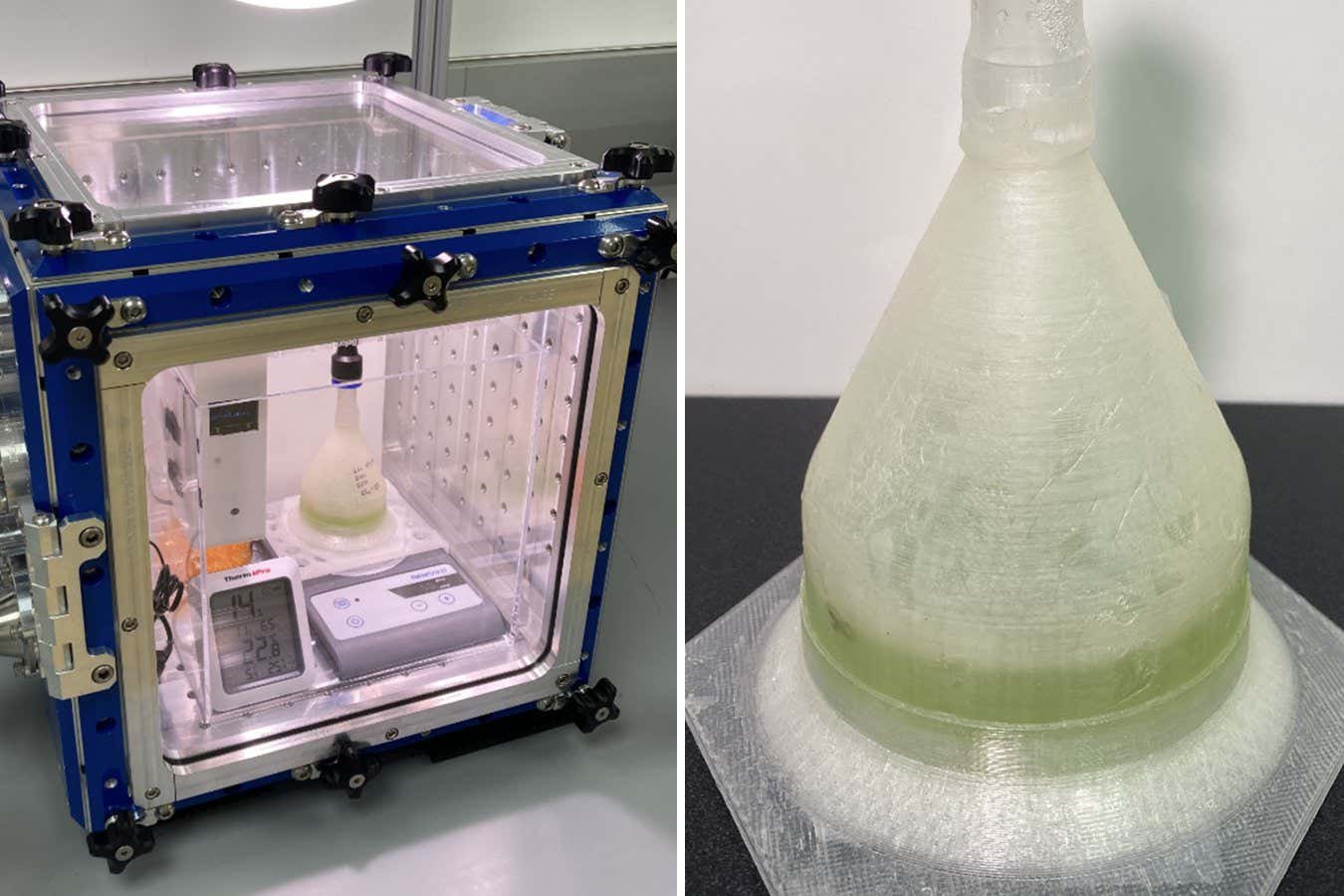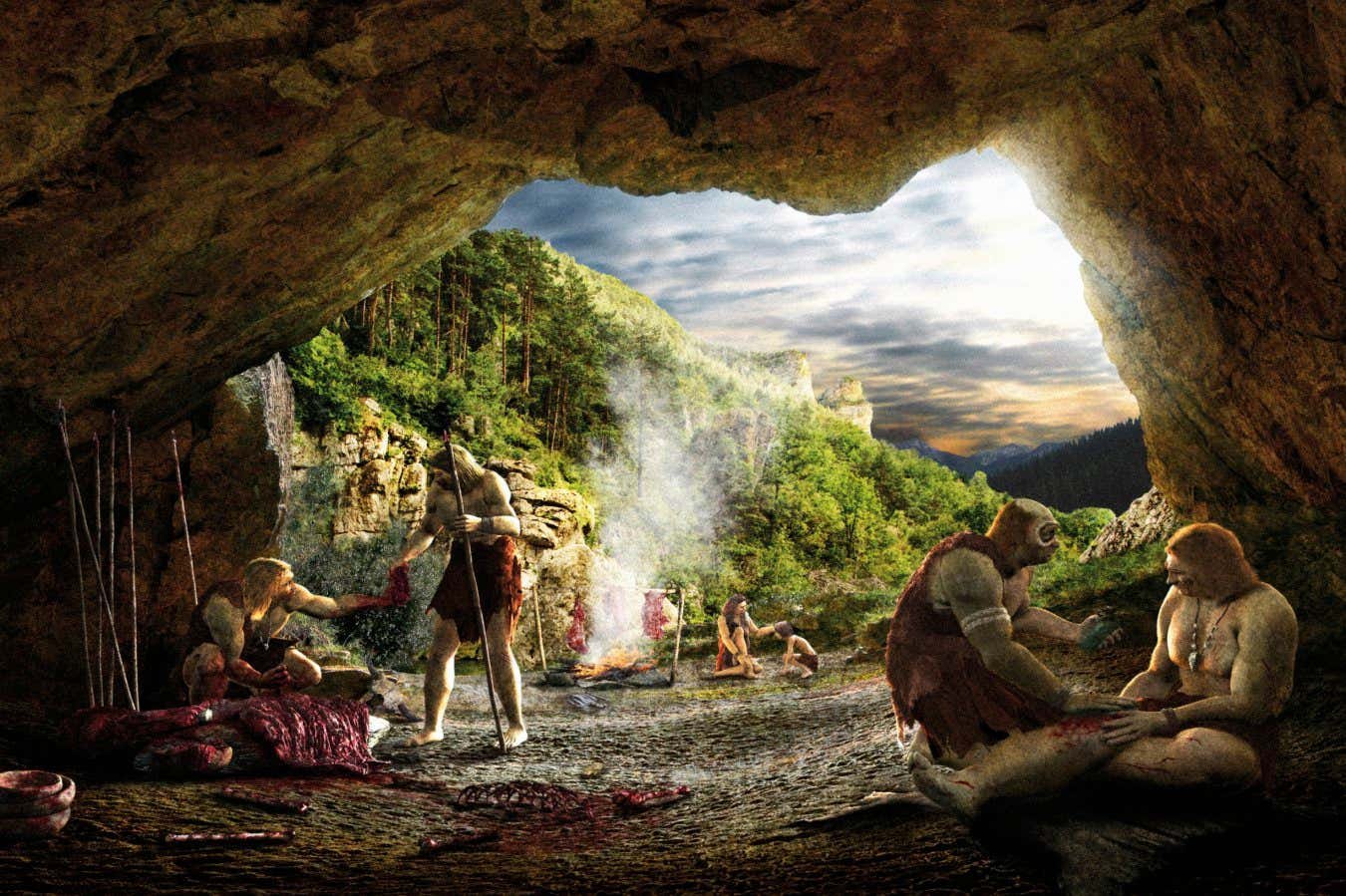
A bioplastic container inside a chamber simulating Mars’s environment
Wordsworth et al., Sci. Adv. 11, eadp4985
Future plastic habitats on Mars could be created from locally grown algae that could then host more algae-growing operations. The first step of such a circular system has been shown to work in Mars-like conditions in a lab, which could help future explorers establish habitats on the planet.
What would you bring to Mars for such an endeavour? Robin Wordsworth at Harvard University has a list: some algae, a small bioreactor, a 3D printer and several flask-like containers made from bioplastic built with plant material. Wordsworth says he would grow algae in the containers, use the bioreactor to turn that algae into more bioplastic, then 3D-print more containers to grow more algae, and so on.
“The concept is that you use a material to make your habitat, which can be constructed from the biology itself. You can create a self-sustaining system,” he says. Wordsworth and his colleagues have now demonstrated the first part of this cycle.
They grew the green algae Dunaliella tertiolecta in containers made from 1-millimetre-thick pieces of a bioplastic called PLA. To match Martian conditions, they placed each container in a chamber where the pressure was about 0.6 per cent of atmospheric pressure on Earth and the air contained more than 98 per cent carbon dioxide. Over 10 days, the researchers found that the algae grew and photosynthesised at rates comparable to more Earth-like conditions.
The idea of 3D-printing bioplastic habitats is about a decade old, but the new experiment shows that these really could sustain life, says Amor Menezes at the University of Florida. “This is tremendously exciting. A journey to Mars, and a stay on Mars, will be roughly a couple of years long, so we can’t take everything with us,” he says. “This shows that bioplastics can potentially support life in Mars-like conditions, and maybe that a lot of useful objects during a Martian stay could be bioplastic.”
The team’s success required several years of experimenting with different container designs and strains of bacteria, says team member Rafid Quayum, also at Harvard University. “Physicists, engineers, planetary scientists, we were all kind of coming together to put our brains together and figure out how can we make environments outside of Earth more habitable,” he says.
Now, the team wants to introduce even more extraterrestrial elements into their experiments by testing materials in a vacuum, to imitate planets or moons that have no atmosphere, and taking them onto spacecraft in low orbits around Earth.
“We think this is a really compelling fundamental research question. It’s certainly important for enabling people to live beyond Earth in the future, but also just as a basic question, to understand the range of ways in which you can support life,” says Wordsworth.
Topics:




